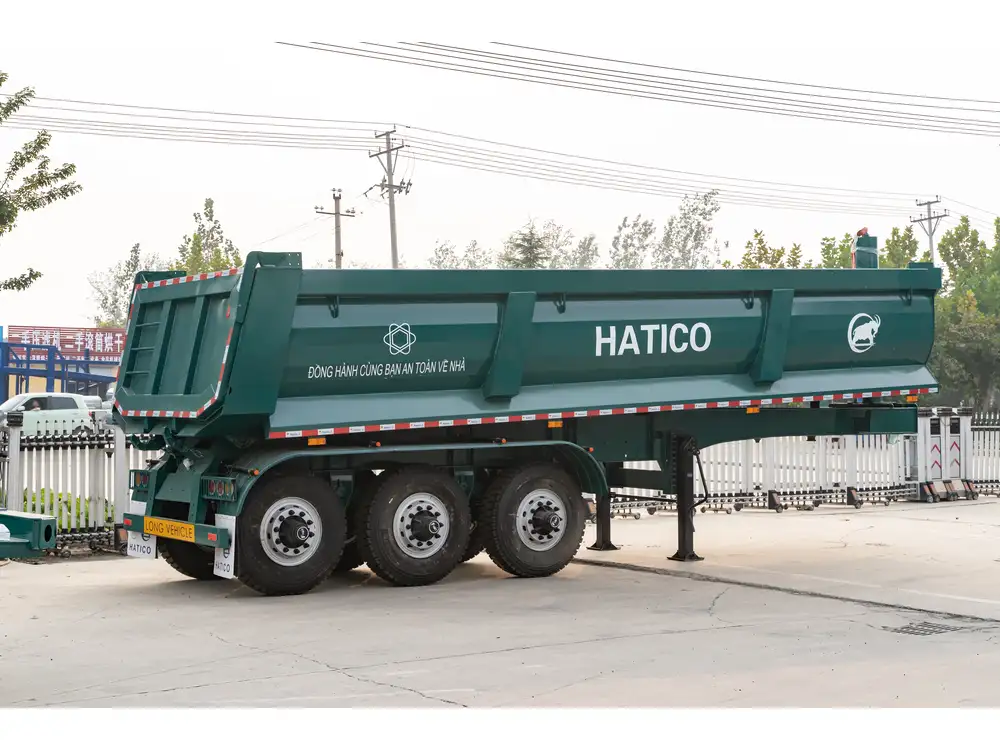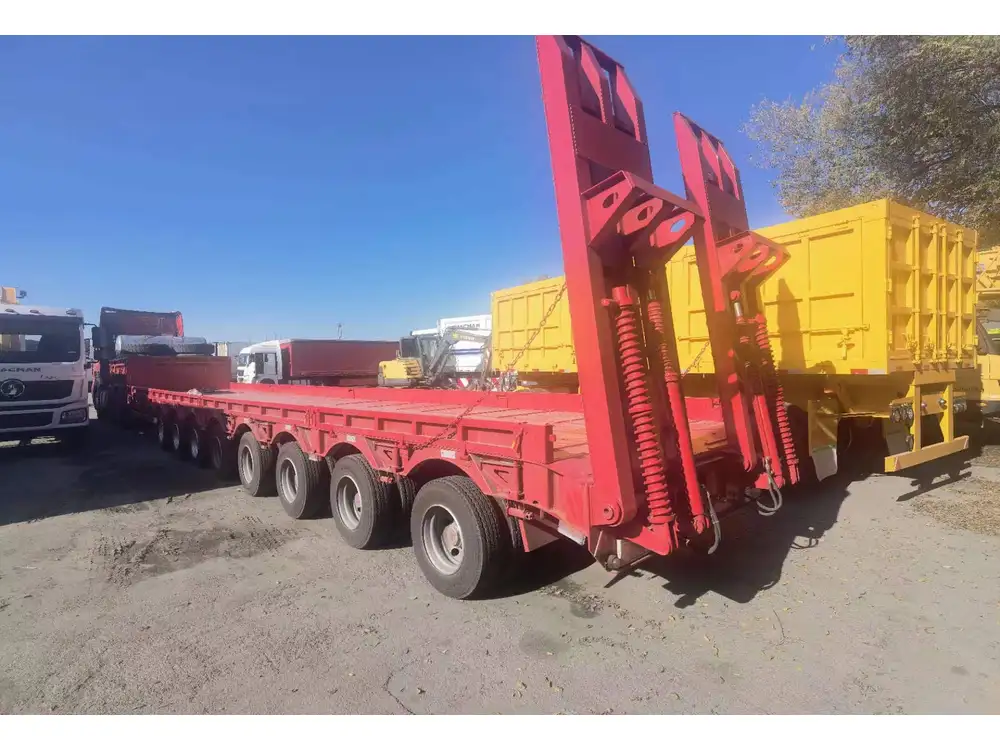Alaska, known for its breathtaking landscapes and subzero temperatures, presents unique challenges for logistics and transportation. When it comes to hauling materials and goods in this frigid expanse, understanding the capabilities of your equipment, particularly semi-trailers, becomes crucial. This article delves into the concept of heated semi-trailers, their availability in Alaska, and the benefits they provide to manufacturers, distributors, and businesses alike.
Understanding Heated Semi-Trailers
What are Heated Semi-Trailers?
Heated semi-trailers are specially designed trucking trailers equipped with heating systems. These systems maintain optimal temperatures inside the trailer to prevent freezing and protect cargo during transit. Ideal for transporting perishable goods, fragile materials, and temperature-sensitive commodities, heated trailers are essential in extreme climates.

Types of Heated Semi-Trailers
Below are some prevalent types of heated semi-trailers and their specific applications:
| Type | Description | Typical Cargo |
|---|---|---|
| Reefer Trailers | Equipped with refrigeration and heating capabilities | Food, pharmaceuticals, chemicals |
| Insulated Trailers | Use insulation materials to retain heat | General cargo requiring warmth |
| Electric Heated Trailers | Utilize electric heaters built into the trailer | Climate-sensitive industrial goods |
| Fuel-Operated Heated Trailers | Feature heaters powered by fuel (diesel, propane) | Bulk liquids, hazardous materials |
The Importance of Heated Semi-Trailers in Alaska
Why Choose Heated Trailers in Cold Climates?
In a state like Alaska, where winter temperatures can plummet drastically, the use of heated semi-trailers is not just advantageous but often essential. Here are several reasons why:
Cargo Protection: Heated trailers help in preventing the freezing of goods, ensuring that materials like food products remain safe for consumption.
Business Continuity: For industries reliant on timely deliveries—such as food supply chains and e-commerce—heated trailers minimize the risk of delays due to weather conditions.
Cost Efficiency: While initially more expensive, heated trailers can enhance operational efficiency by reducing losses from damaged cargo, which may incur hefty costs.

Common Uses of Heated Semi-Trailers in Alaska
The demand for heated trailers spans various sectors. Here are the most common uses:
Food Distribution: Frozen and fresh food items often require specific temperatures to maintain safety and quality during transport.
Pharmaceutical Transport: Medications and vaccines necessitate controlled temperatures to preserve their efficacy.
Hazardous Materials: Certain chemicals need to be stored within specific temperature ranges to remain stable and safe.
Do Heated Semi-Trailers Exist in Alaska?
Availability of Heated Semi-Trailers
The question “Does Alaska have heated semi-trailers?” can be answered in the affirmative. Heated semi-trailers are available through various local and national rental services and manufacturers. Businesses operating in Alaska can access these units through:
Local Equipment Rental Companies: Many local dealers stock heated semi-trailers suited for cold climates.
National Manufacturers: Several manufacturers specialize in producing heated trailers, often shipping units to Alaskan clients.
Used Equipment Market: Businesses seeking more cost-effective solutions might consider purchasing used heated trailers from vehicle auctions or classifieds.

Features of Heated Trailers Available in Alaska
When searching for heated semi-trailers in Alaska, here are key features to consider:
Insulation Quality: Look for trailers with premium insulation to maximize heat retention.
Heating Systems: The trailer should be equipped with reliable heating systems, such as electric heaters or fuel-based options, depending on your operational needs.
Size and Configurations: Ensure that the size and configuration of the trailer meet your logistical requirements, from standard 53-foot units to smaller models.
Choosing the Right Heated Semi-Trailer for Your Needs
Factors to Consider
When selecting a heated semi-trailer, it’s essential to evaluate several key factors:
Type of Cargo: Determine what you will be transporting to choose the right type of heated trailer.
Route and Distance: Depending on your delivery distances, certain trailers may perform better in maintaining temperature due to their heating systems.
Budget Constraints: Balance the need for a heated unit with your budget, considering purchase vs. rental options.

Recommended Practices for Maintenance
To maintain efficiency and performance over time, here are practical maintenance tips for heated semi-trailers:
Regular Inspections: Conduct routine checks on heating systems and insulation integrity to ensure functionality.
Clean Heating Units: Keep heating components clean and functioning to avoid unexpected failures during transport.
Monitor Performance: Use temperature monitoring systems to provide real-time data on conditions during transit, adjusting as needed.
Advantages of Using Heated Semi-Trailers in Alaska
Enhanced Efficiency and Reliability
Businesses that utilize heated semi-trailers in Alaska often find significant improvements in operational efficiency. Key advantages include:
Reduced Risk of Damage: By preventing freezing, companies can minimize the risk of lost or damaged products, thus safeguarding profit margins.
Increased Customer Satisfaction: Timely deliveries and quality protection lead to enhanced customer satisfaction and retention.
Adaptability: Heated trailers provide logistical flexibility, enabling businesses to operate year-round despite harsh weather conditions.

Real-World Application Scenarios
Consider the impact of heated semi-trailers through practical scenarios:
Scenario 1: A local food distributor in Anchorage uses heated trailers to deliver fresh produce to remote areas. With the ability to maintain temperature, they successfully overcome the challenges posed by fluctuating temperatures, thus ensuring freshness upon arrival.
Scenario 2: A pharmaceutical company regularly transports vaccines throughout Alaska. Their heated trailers guarantee that products remain at optimal temperatures, ultimately preserving their effectiveness and complying with health regulations.
Conclusion: The Strategic Necessity of Heated Semi-Trailers in Alaska
In conclusion, as Alaska continues to evolve as a significant hub for logistics and commerce, the demand for specialized transportation solutions, such as heated semi-trailers, will only grow. These trailers not only offer the essential protection that commodities need in extreme cold but also enable businesses to operate efficiently and reliably.
As logistics in Alaska becomes increasingly complex due to climate challenges, investing in the right equipment, including heated semi-trailers, is not merely a matter of preference—it’s a strategic necessity that directly contributes to business success. By understanding the features, advantages, and optimal practices surrounding heated trailers, companies can position themselves to effectively meet their transportation needs no matter how harsh the Alaskan winter may be.



